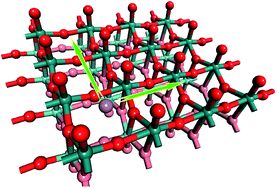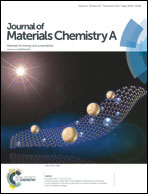Theoretical design of MoO3-based high-rate lithium ion battery electrodes: the effect of dimensionality reduction†
Abstract
By means of density functional theory computations, we systematically investigated the behavior of lithium (Li) adsorption and diffusion on MoO3 with different dimensions: including three-dimensional (3D) bulk, two-dimensional (2D) double-layer, 2D monolayer and one-dimensional (1D) nanoribbons. The Li binding energies and diffusion barriers are comparable in MoO3 bulk and double-layer. Reducing the dimension to the MoO3 monolayer simultaneously lowers the Li diffusion barrier and the interaction between Li atoms and the MoO3 monolayer. Cutting the MoO3 monolayer into 1D nanoribbons can further facilitate the diffusion of Li atoms, and enhance the Li binding energies. Especially, Li diffusion on nanoribbons is rather facile along both the axial and the transverse directions. These computational results demonstrate that due to the dimensional reduction, MoO3 monolayer nanosheets and nanoribbons have exceptional properties (good electronic conductivity, fast Li diffusion, high operating voltage and high energy density), and thus are promising as high-rate Li ion battery electrodes.

- This article is part of the themed collection: 2014 Journal of Materials Chemistry A Hot Articles

 Please wait while we load your content...
Please wait while we load your content...